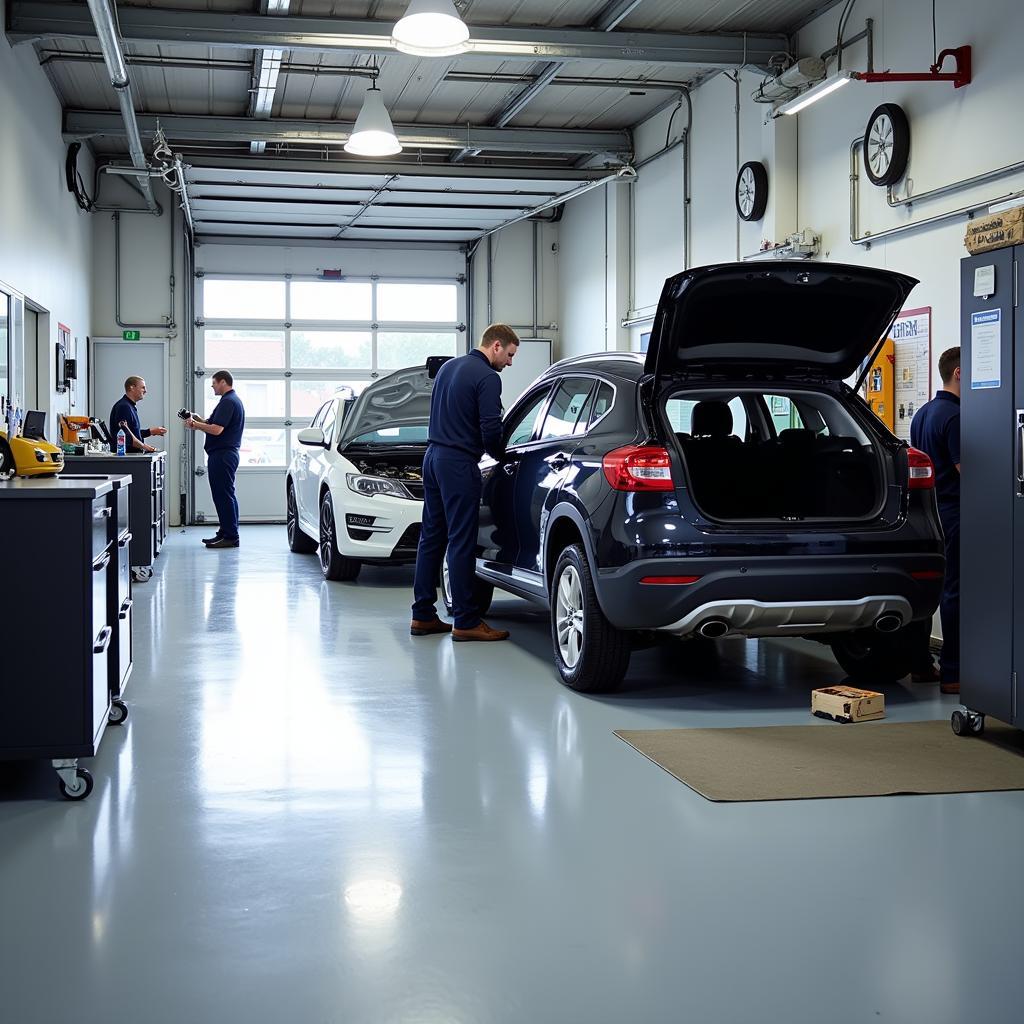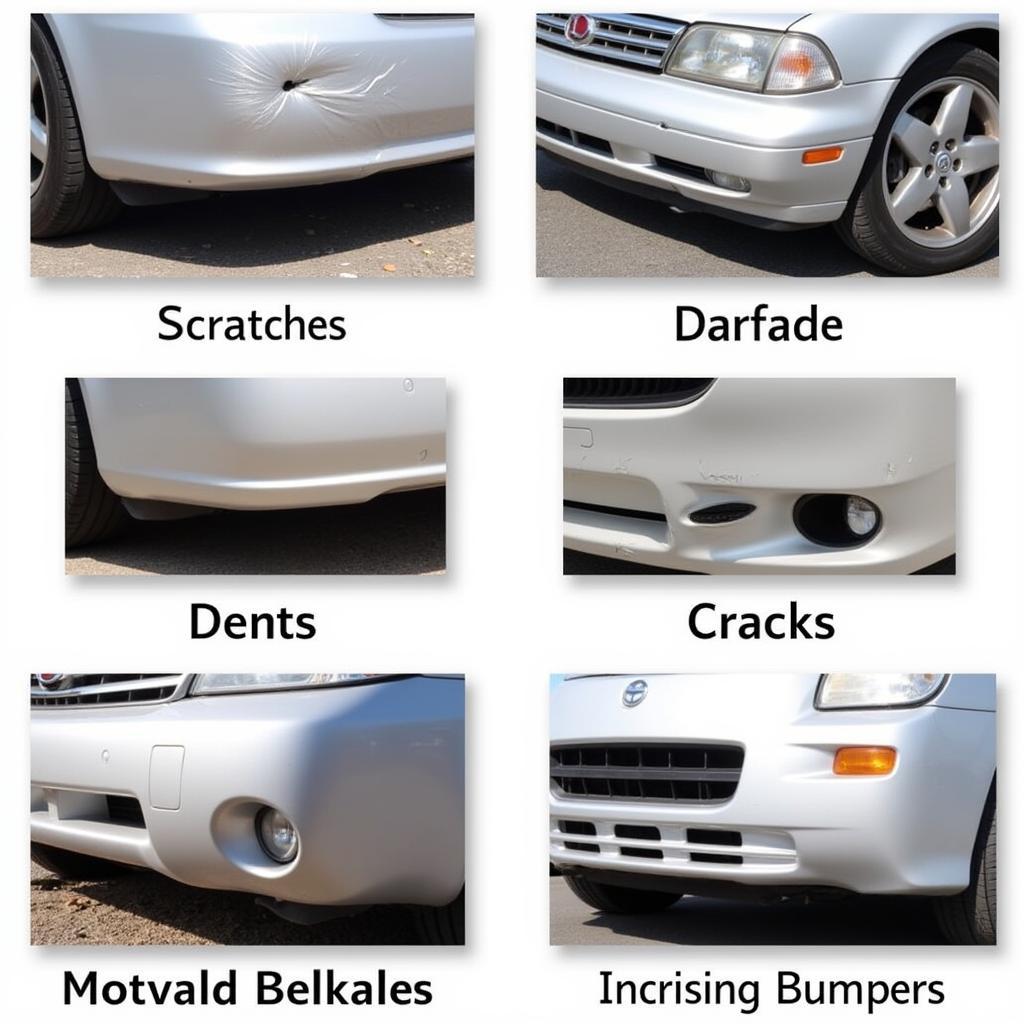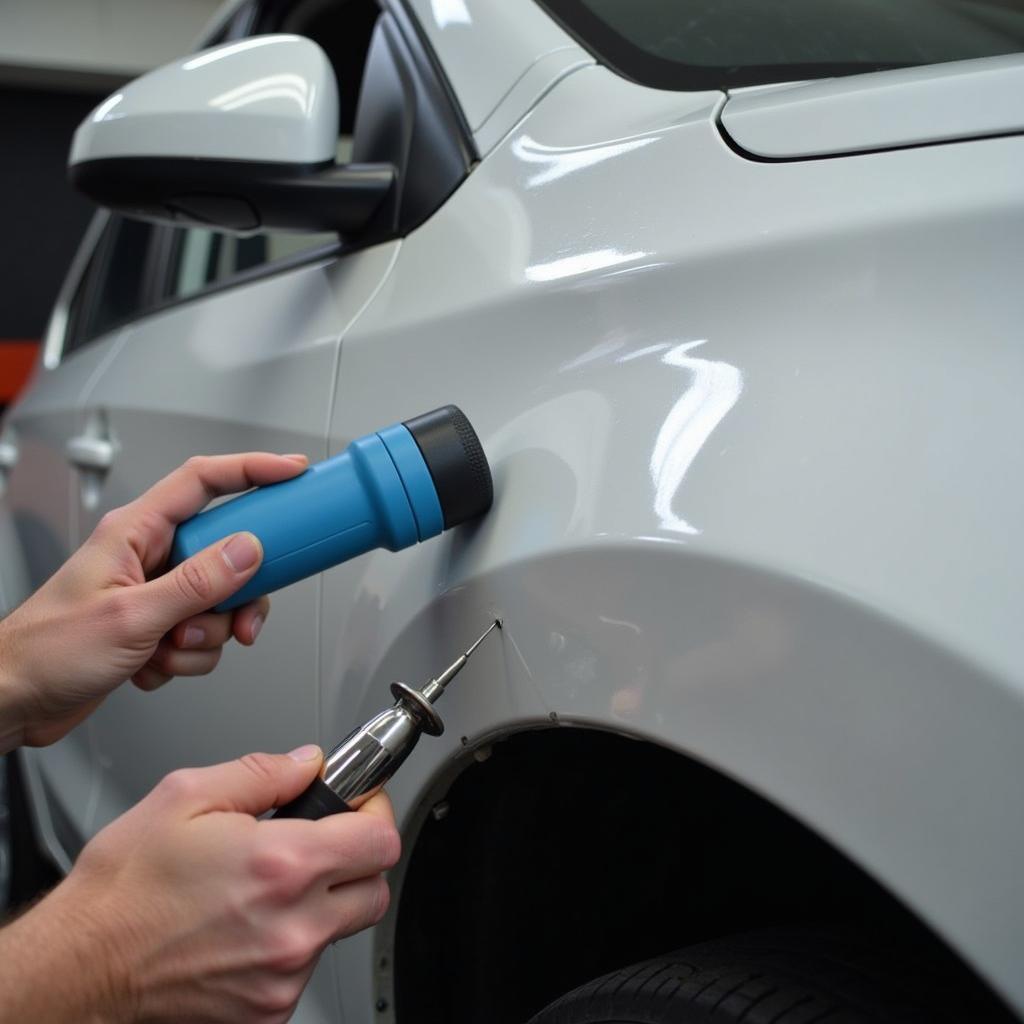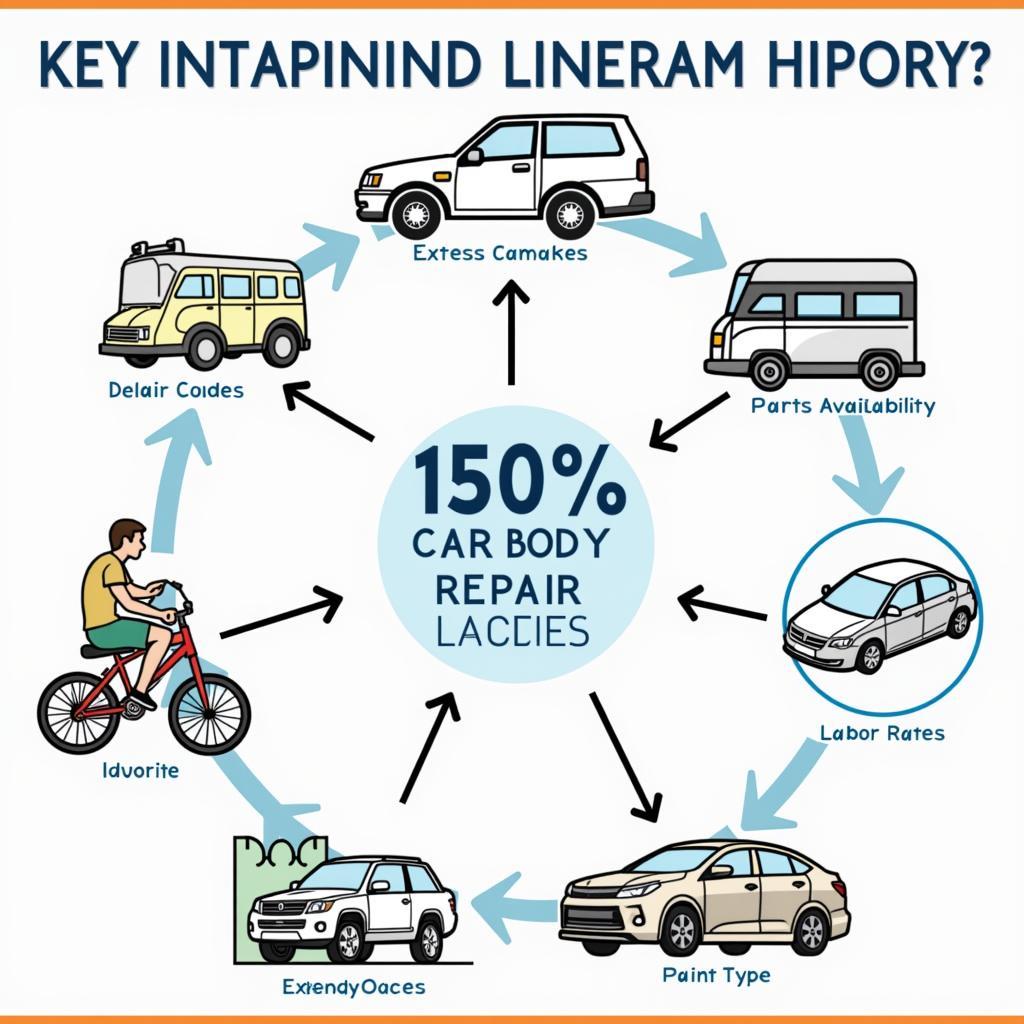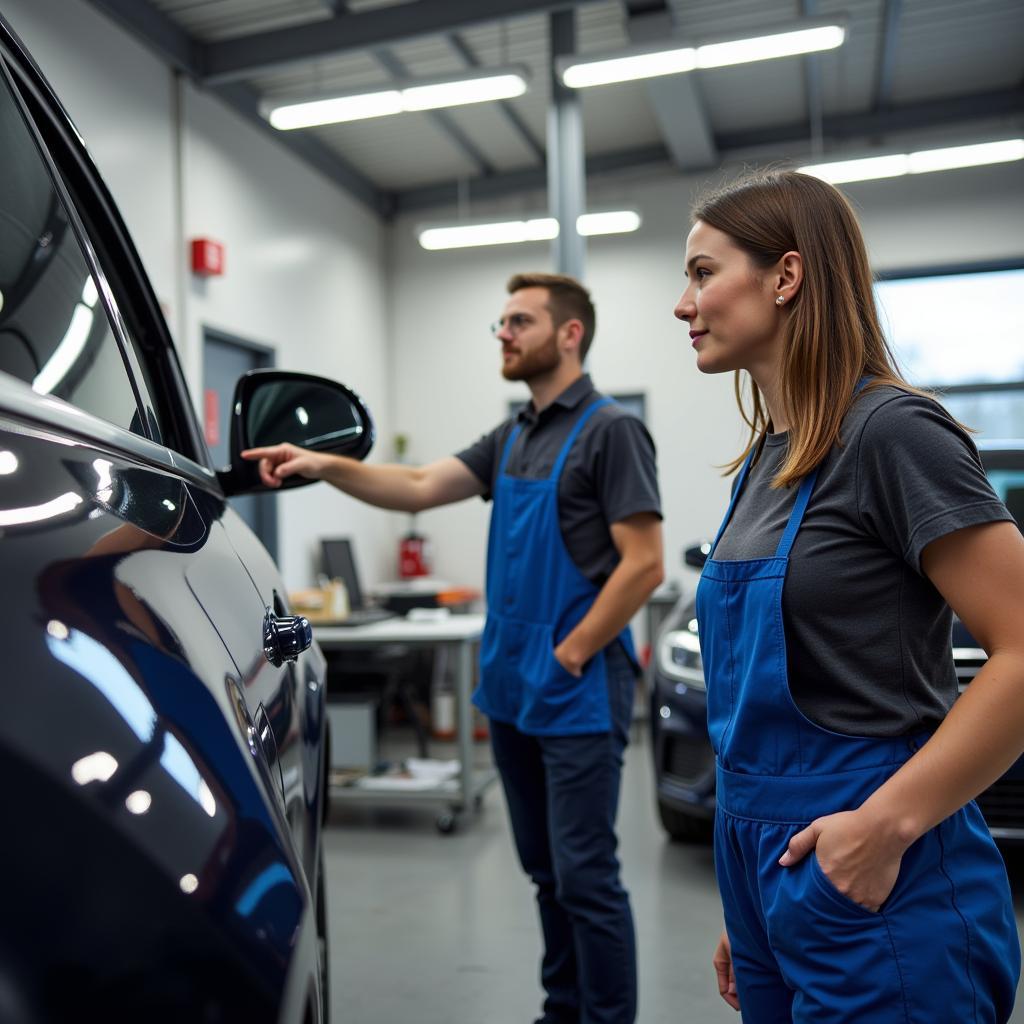Repairing Car Bumpers Plastic has become increasingly common due to the prevalence of minor collisions and fender benders. Understanding the process, materials, and techniques involved can save you significant money and hassle. This guide provides everything you need to know about DIY plastic bumper repair.
Whether your bumper has a minor scratch, a dent, or even a crack, there are effective methods to restore its appearance and functionality. From simple fixes using a car plastic bumper repair kit to more complex repairs involving fillers and adhesives, we’ll cover it all. Knowing when a DIY approach is appropriate and when professional help is necessary is crucial for achieving the best results. After reading this guide, you will be equipped to make informed decisions about repairing your plastic car bumper. This article provides valuable insights for both car owners and professionals in the automotive industry. You might consider checking out a car bumper repair kit for minor repairs.
Understanding Plastic Bumper Damage
Different types of damage require different approaches. A small scratch might only need a touch-up, while a deep crack could necessitate more extensive repair work. Identifying the type and severity of the damage is the first step toward choosing the right repair method. Is it a minor scuff, a deep gouge, or a complete break? The answer to this question will determine your next steps. Understanding the material your bumper is made from is also essential. Most modern bumpers are made from thermoplastic olefins (TPO), which are flexible and repairable.
DIY Repairing Car Bumpers Plastic: Step-by-Step Guide
For minor damage, a DIY approach can be cost-effective and straightforward. Here’s a step-by-step guide:
- Clean the area: Thoroughly clean the damaged area with soap and water, then degrease it with a suitable cleaner.
- Sand the damaged area: Using sandpaper, smooth out the rough edges and create a surface for the repair material to adhere to.
- Apply filler (if necessary): For deeper damage, apply a plastic filler designed for car bumpers. Allow it to dry and sand smooth.
- Sand and prime: Sand the repaired area smooth and apply a plastic primer.
- Paint and finish: Apply a matching paint color and clear coat for a professional-looking finish.
If you’re in the Fort Worth area and looking for professional help, you might want to check out services for car bumper repair Fort Worth.
When to Seek Professional Help
While DIY repairs can be effective for minor damage, more complex issues often require professional expertise. If your bumper is severely cracked, broken, or misaligned, it’s best to consult a qualified technician. Professional car bumper repair adhesive offers superior strength and durability. Professionals have the necessary tools, equipment, and experience to handle complex repairs, ensuring a long-lasting and aesthetically pleasing result. Attempting a DIY repair on significant damage could exacerbate the problem and ultimately cost you more in the long run.
For those in Lincolnshire, you can find reputable services specializing in car bumper repair Lincolnshire. They can handle various types of bumper damage efficiently.
Choosing the Right Repair Kit and Materials
Selecting the right car plastic bumper repair kit is crucial for achieving optimal results. Ensure the kit is specifically designed for plastic bumpers and contains the necessary components, such as filler, hardener, sandpaper, and primer. Consider the type of plastic your bumper is made from and choose a kit compatible with that material. High-quality materials will ensure a more durable and seamless repair. For information on repairing cracks specifically, you can refer to the guide on how to repair a crack in car bumper.
Preventing Future Bumper Damage
Prevention is always better than cure. Practice safe driving habits, park carefully, and be mindful of obstacles to minimize the risk of bumper damage. Regularly inspecting your bumper for minor scratches and addressing them promptly can prevent them from developing into more significant issues.
Conclusion
Repairing car bumpers plastic can be a manageable DIY project for minor damage, saving you time and money. However, significant damage necessitates professional intervention for optimal results. By understanding the different repair methods, choosing the right materials, and knowing when to seek professional help, you can keep your car looking its best. Remember, properly repairing your plastic car bumper enhances both the aesthetic appeal and safety of your vehicle.
FAQs
- Can I repair a cracked plastic bumper myself? Minor cracks can be repaired with a DIY kit, but larger cracks may require professional repair.
- What type of filler should I use for plastic bumper repair? Use a two-part epoxy or plastic filler specifically designed for automotive plastic.
- How long does it take for plastic bumper filler to dry? Drying times vary depending on the product, but typically range from 30 minutes to a few hours.
- Do I need to prime the bumper before painting? Yes, priming is essential for proper paint adhesion.
- Can I repair a plastic bumper without painting it? Minor scratches can sometimes be buffed out, but most repairs will require painting for a seamless finish.
- How much does professional plastic bumper repair cost? The cost varies depending on the severity of the damage and the location.
- How can I prevent future bumper damage? Practice safe driving habits, park carefully, and address minor scratches promptly.
Common Bumper Repair Scenarios
- Scenario 1: Minor Scratches: These can often be buffed out with a polishing compound.
- Scenario 2: Small Dents: A heat gun and some pressure can sometimes pop out small dents.
- Scenario 3: Deep Cracks or Breaks: These typically require professional repair or bumper replacement.
Further Reading
For more information, explore these resources on our website: car bumper repair.
Need help with repairing car bumpers plastic? Contact us via WhatsApp: +1(641)206-8880, Email: [email protected]. We have a 24/7 customer support team.

